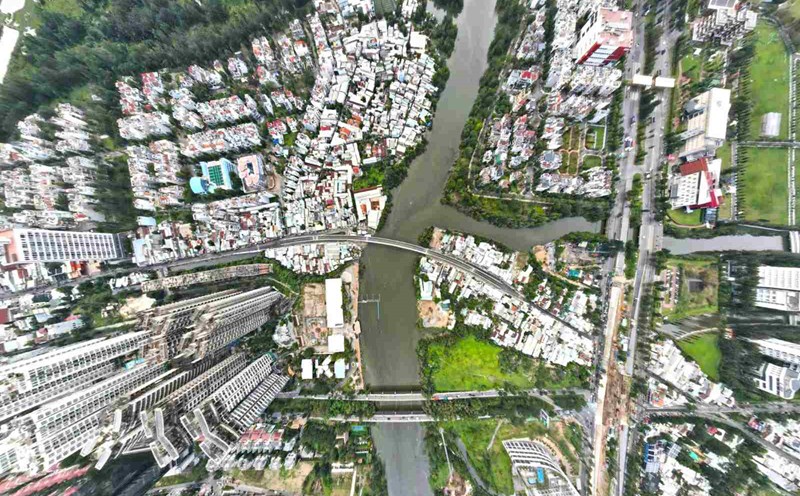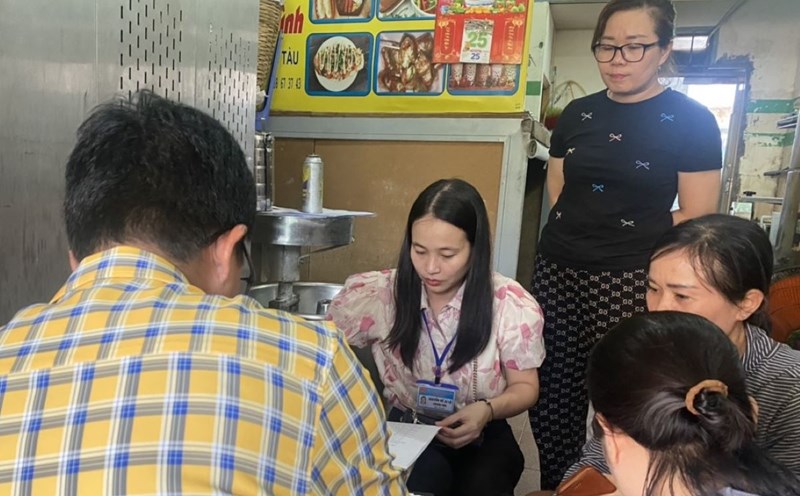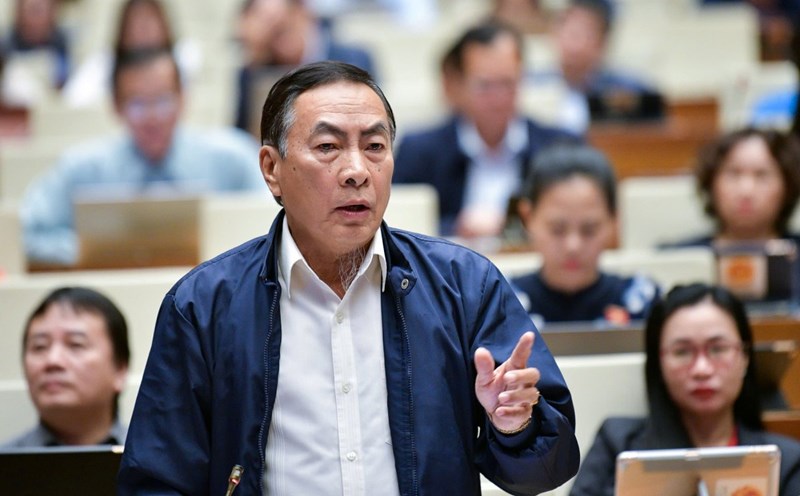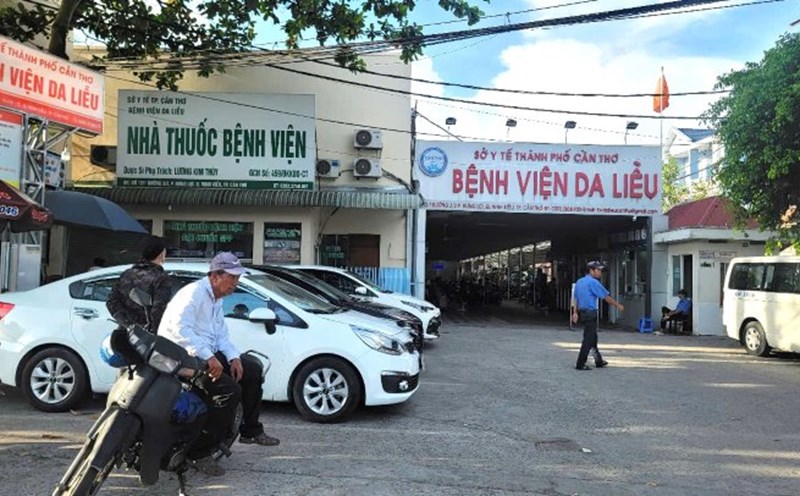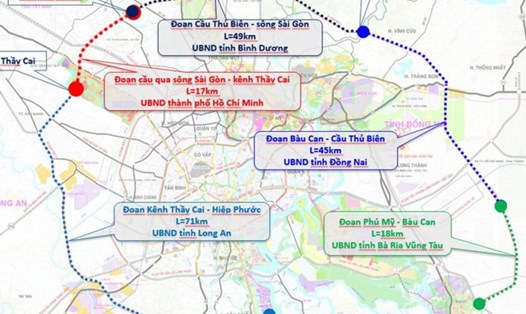Ho Chi Minh City Ring Road 4 was planned in 2011 and passes through the localities of Ho Chi Minh City, Binh Duong, Dong Nai, Long An, Ba Ria - Vung Tau, with a total length of more than 200 km.
After many years of waiting, the Ho Chi Minh City People's Committee recently submitted a pre-feasibility study report on this project to the Prime Minister and the Ministry of Planning and Investment.
The total length of the Ho Chi Minh City Ring Road 4 project expected to be submitted to the National Assembly for investment approval is nearly 160 km.
Of which, the section through Long An is the longest with more than 78 km, Dong Nai is more than 46 km, Ba Ria - Vung Tau is 18.2 km and Ho Chi Minh City is 16.7 km.
The section passing through Binh Duong province, about 48 km long, will be invested independently according to the project investment policy approved by the Provincial People's Council.

The total investment for phase 1 of the project is estimated at about 122,774 billion VND, of which 53,109 billion VND will be mobilized from investors, the rest from the state budget.
Ho Chi Minh City Ring Road 4 occupies more than 1,400 hectares of land. The project site was cleared at once with a complete scale from the beginning and built in advance with 4 expressway lanes and 2 emergency lanes.
According to the plan, after the project investment policy is approved by the National Assembly, localities will select investors in 2025 and implement site clearance compensation and resettlement from 2025 - 2026.
Component projects across localities will start construction from the third quarter of 2026 and be completed in 2028.
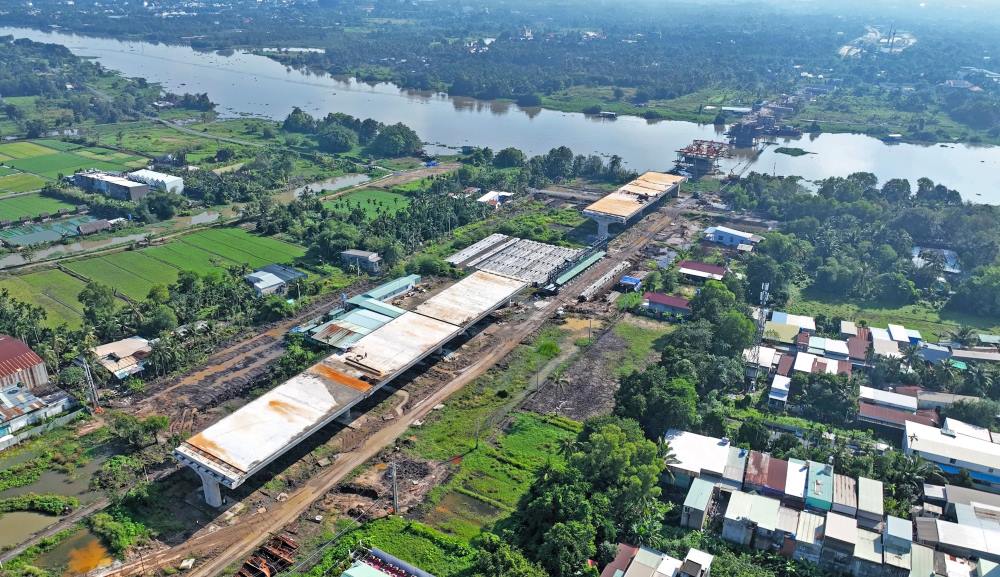
The Ho Chi Minh City area is planned to be surrounded by 3 belt routes. Belt Route 3 passes through Ho Chi Minh City, Binh Duong, Dong Nai, Long An, is more than 76 km long, is under construction, and is expected to be completed in 2026. Belt Route 2 is located entirely within Ho Chi Minh City, about 64 km long, and some sections are preparing to be invested in a closed system.
If Belt Roads 2 and 3 mainly connect within the Southeast region, Belt Road 4 also has special significance in connecting Ho Chi Minh City with other regions such as the South Central Coast, Southwest, Central Highlands, and even Cambodia through the Trans-Asian corridor.
This route will form an industrial, urban, service and logistics belt, creating the premise for the development of regions, urban areas and industrial and service centers along the route.
According to Chairman of the Ho Chi Minh City People's Committee Phan Van Mai, Ring Road 4 will connect with all current and future expressways, helping to promote the development of not only Ho Chi Minh City but also the southern provinces. When completed, this route will become an important part of the effective inter-sectoral and inter-local linkage chain.
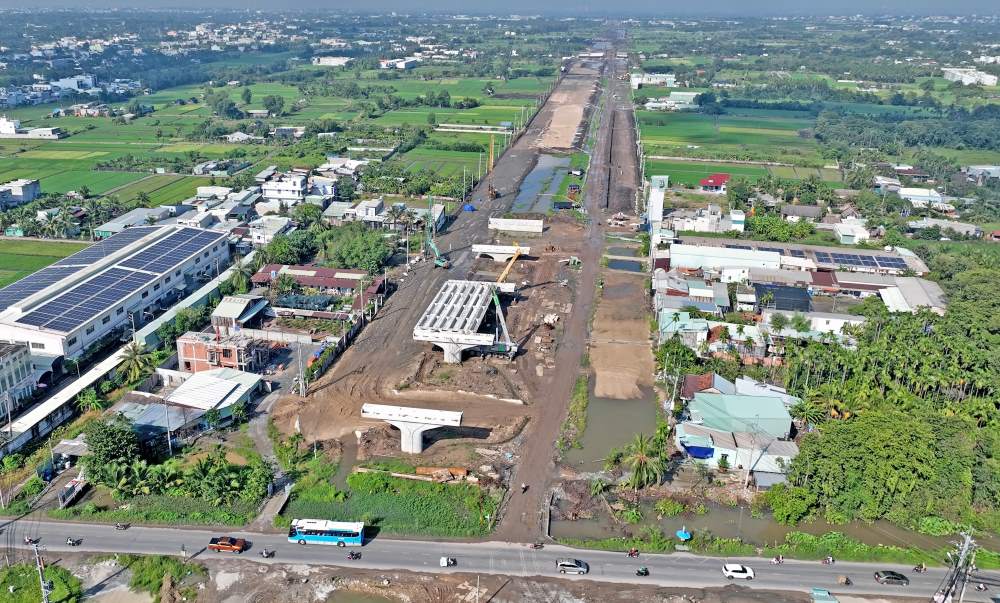
To speed up the implementation of the Ring Road 4 project, Ho Chi Minh City and localities have proposed a specific policy mechanism, broader than that of Ring Road 3. One of the highlights is the mechanism to increase the proportion of state capital participating in PPP projects to a maximum of 70%.
Localities also want to be strongly decentralized, proactively establish appraisal councils, organize appraisals of feasibility study reports, and at the same time decide to invest in component projects and adjust planning when necessary, etc.


